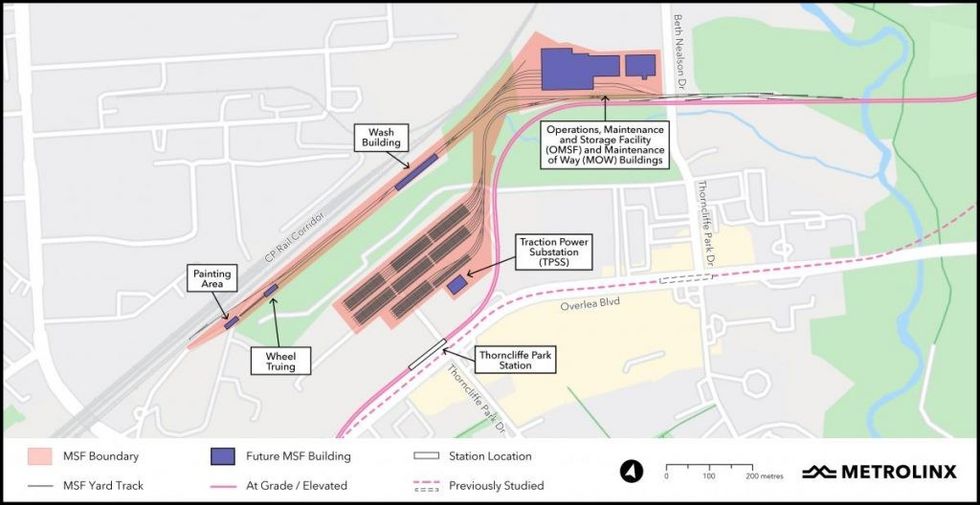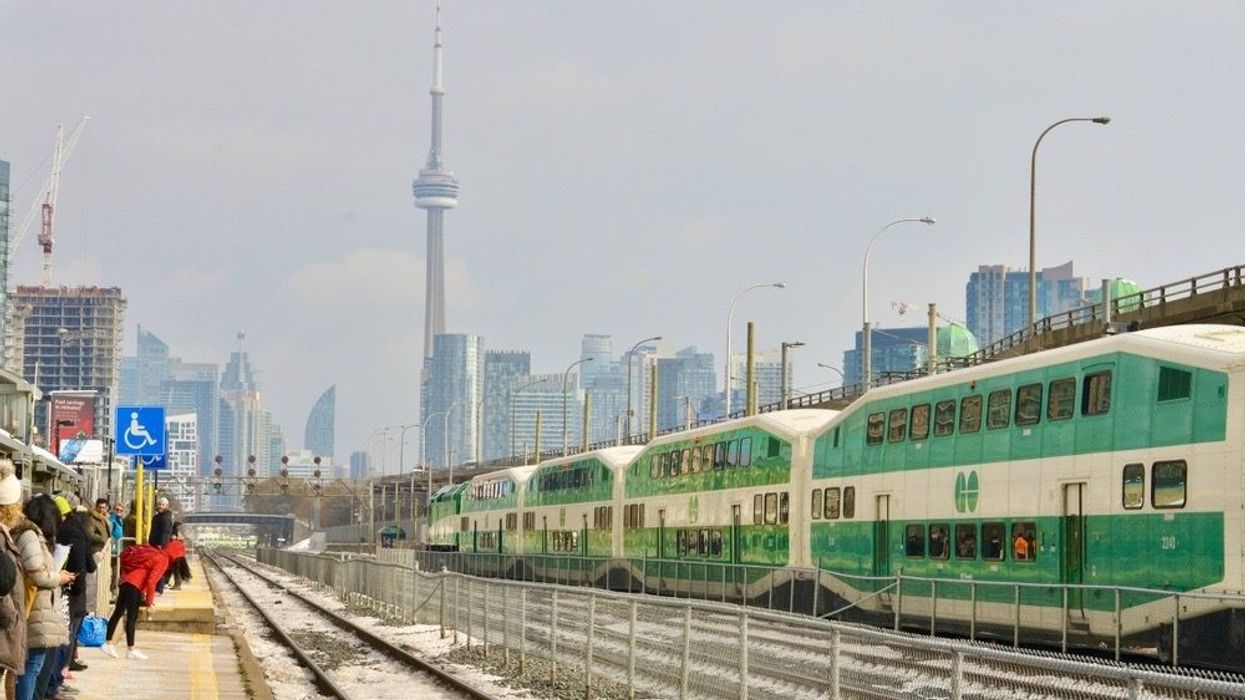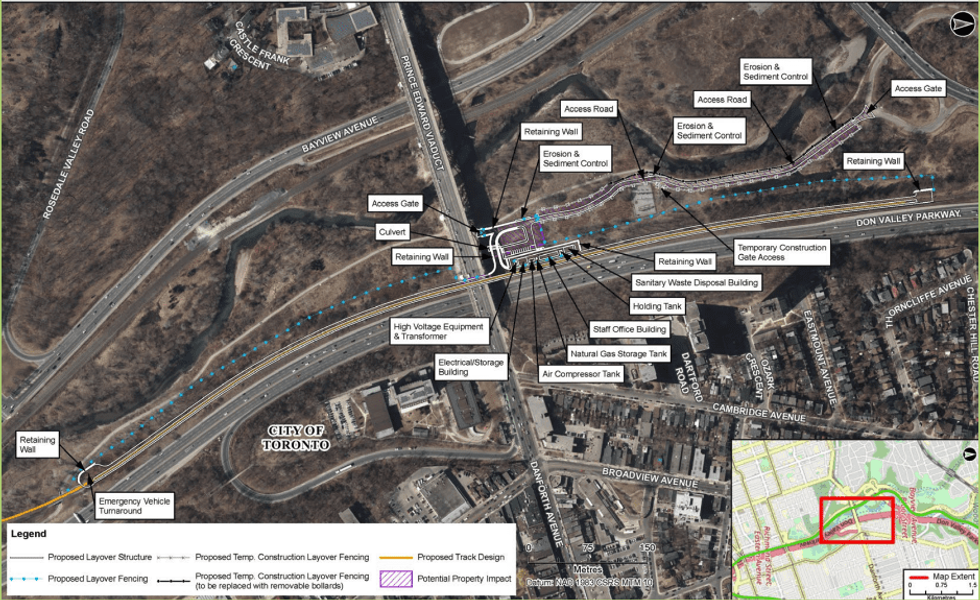A city is the sum of its infrastructure. They are one and the same, inseparable. So when a major provincial infrastructure agency such as Metrolinx goes rogue, the consequences are disastrous. Yet, in recent years, the corporation has made so many missteps, one can’t help but wonder whether the benefits that flow from the completion of its various projects won’t be outweighed by the damage done during the implementation process.
Metrolinx is a classic example of an organization that loses touch with the city it serves and comes to believe the ends justify the means. Yes, building infrastructure can be painful, but it need be neither disrespectful nor arrogant.
So, what could have been a powerful exercise in community-building has instead become a series of gratuitously brutish interventions into neighbourhood and civic integrity. Bringing Toronto’s underfunded and overwhelmed transit system into the 21st century will be no easy task, but Metrolinx, secretive and hostile, has used its mandate as an excuse to ride roughshod over those who stand in its way.
Though Toronto is more prone than some cities to unseemly NIMBY outbursts, it doesn’t follow that all complaints are unjustified simply because they are local. Quality of life should not be confused with the price of real estate. Though we decry the latter, we’re proud of the former.
READ: Hurry Up and Wait: Ford’s Commitment to New Highways Should Pump the Brakes
When, for example, Metrolinx announced it would build an 11-acre GO train layover in the Don Valley, it casually trashed more than 50 years of work to rehabilitate a landscape that has been used for everything from a garbage dump to a six-lane highway. This, of course, means little to the agency. Alternative sites abound, but Metrolinx’s deep-seated culture of planning paranoia and intellectual lethargy, its lack of imagination and desperate need to please the bosses at Queen’s Park make them unappealing.
And despite the absence of neighbours, let alone NIMBYs, the outcry has been impossible to ignore. Turns out that Torontonians do care about their city, which they still see as more than a way for home-owners to get rich. Just last weekend several hundred show up at Riverdale Park East to protest against the layover.
In 2019, Mayor John Tory went to Evergreen Brick Works to declare his support for a plan to create Don River Valley Park. It was, he said, “a bold idea.” Describing it as, “A city-wide strategy… to help restore, connect and animate the 11,00-hectare system,” he argued that it “holds the promise to define Toronto [and] offer a significant ‘place-making’ opportunity for those us who live here and to share our unique natural assets with visitors.”
Clearly, His Worship’s compelling Arcadian vision of a valley restored and returned to nature did not include a GO train layover. With its service road, parking lot, endless fencing, retaining walls and let’s not forget, its sanitary waste storage building, Metrolinx’s proposed facility is wildly at odds with the city’s scheme.
Oh yes, then there’s Waterfront Toronto’s city-changing $1.25-billion plan to naturalize the mouth of the Don River. Launched in 2017, it will transform this section of Lake Ontario as well as the Don Valley. Construction will be completed in 2024.
Meanwhile, up in Thorncliffe Park, Metrolinx has plans to build a 175,000-square-metre storage and maintenance yard for its Ontario Line metro route. The site, which is the size of 24 soccer fields, will house up to 250 subway carriages. Problem is that Thorncliffe Park is home to more than 30,000 people. The fact that many residents are immigrants from Afghanistan, India, and Pakistan had nothing to do with the decision, insists Metrolinx CEO, Phil Verster. Work is expected to start in 2022.

The list of ad hoc community groups that have formed in response to various Metrolinx initiatives is impressive. As a measure of outrage it is telling: there’s Save Jimmie Simpson, Friends of Small’s Creek, Lakeshore East Community Advisory Committee, Don’t Mess with the Don and First Parliament, Pape Area Concerned Citizens for Transit, and Keep the Subway on Yonge. Though they represent a range of issues, all feel ignored and disrespected by Metrolinx. In some cases, building transit means expropriating buildings and cutting down trees can’t be avoided. But sometimes it can. Either way, consultation is key. Public consultation is like justice, it must be seen to be done.
Of course, the provincial government’s contempt for those who disagree doesn’t help, especially if they live in Toronto. The 2020 Building Transit Faster Act and Doug Ford’s embarrassingly frequent use of Ministerial Zoning Orders (each one of which represents an instance when his regime resorted to brute constitutional force to override citizen, civic and institutional opposition) are examples of his party’s anti-democratic tendencies.
Indeed, Metrolinx has us wondering whether Ontario Conservatives haven’t managed to weaponize public transit, using it both as a way to punish recipient communities and drive a wedge between Toronto and the hinterland, suburban and exurban. Given the premier’s overt antipathy to bike-riding “downtown activists” and the PC’s general unpopularity in urban centres, such a scenario makes sense.
As Toronto’s transit guardian, the indefatigable Steve Munro, observed in a blog last June: “The Metrolinx attitude is that the enabling legislation allows them to build anything and perform only the most cursory of public consultation. Most if not all significant decisions are set in stone and approved by the Minister before much consultation even begins. In effect, the public is asked to pick colours for seat cushions on new vehicles….”
Even that might be overly generous; what Munro didn’t say is that those cushions can be any colour we want as long as it’s Tory Blue.






















